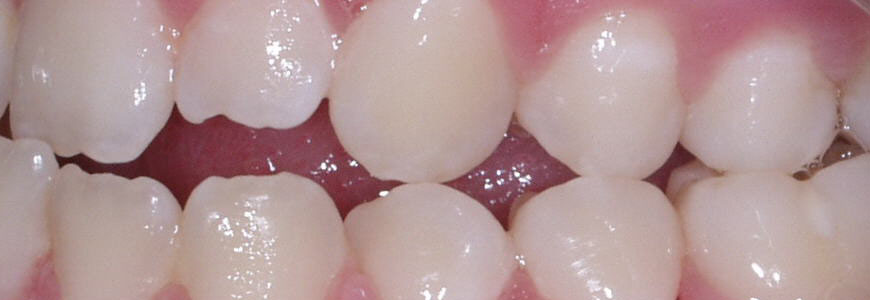
In a normal jaw structure, the teeth of the upper jaw are slightly outside the lower jaw. However, there are instances where the overlap is excessive (overbite) and those where the lower jaw extends beyond the upper jaw (under bite). Cross bite is yet another condition of the teeth where the position of one or more teeth is reversed.
This condition can be genetic, but can also be caused by a rare development of the teeth or jaws. Other causes could be prolonged thumb sucking or severe tongue thrusting, which deforms the palate and causes the teeth to grow crooked, resulting in a cross bite condition. Crowded teeth and damaged jaws with missing teeth also result in a cross bite. The situation is not self correcting, and as the tooth grows, the alignment will never correct itself, so there is no point in waiting and hoping that the problem would sort itself out. In fact, the sooner the condition is corrected, the less difficult the treatment is.
Treatment consists of a process of expansion of the jaw bones. This is best done before the facial bones fuse. In females this happens by about sixteen years and at about nineteen years in males.
Therefore, an earlier expansion of the bones is likely to be easier and yield better results in less time.
Fortunately, interceptive orthodontics, a branch of dentistry that deals with problems of this type, is able to correct these issues early. Your dentist will probably not delay referring you to an orthodontist who will take a series of panoramic x-rays to determine the exact nature of the complication and chart out a comprehensive plan to make the corrections that are required.
In many cases, the surgery is covered under dental insurance, but it would be wise to check this beforehand.
Unlike many other dental conditions, a cross bite has implications that go beyond mere cosmetic issues. It is prudent to get the condition corrected as early as possible.

